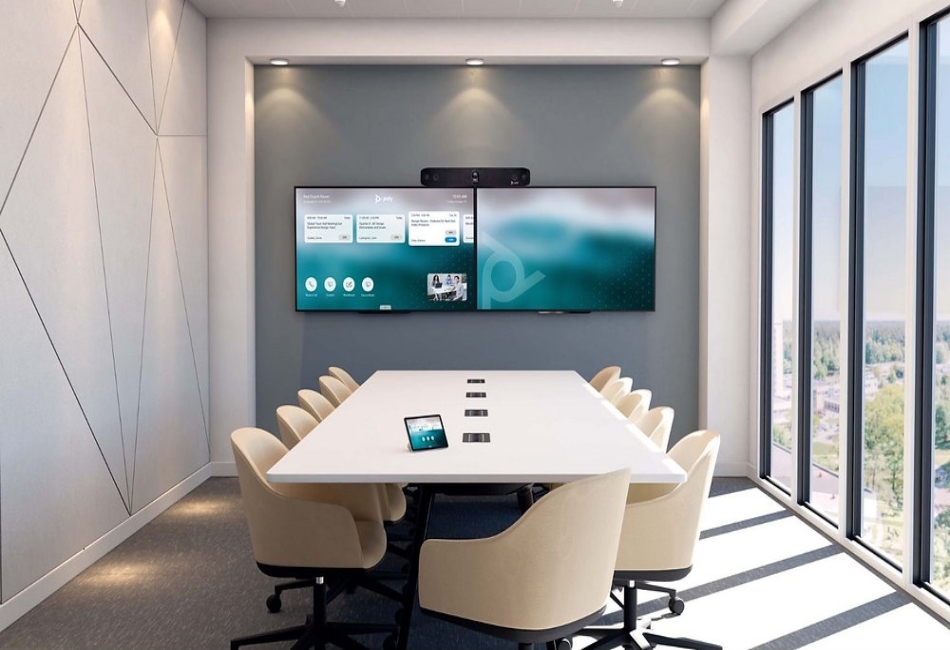Business doesn’t wait—and neither should your tech. Whether it’s a last-minute client pitch, an impromptu board meeting, or an unexpected shift to hybrid operations, the ability to spin up a fully functional video conferencing space in less than a day is becoming a competitive edge. The era of booking weeks in advance for dedicated AV rooms is fading fast. Now, agility is the name of the game.
But setting up a high-performance conferencing room in a temporary space isn’t just about stacking laptops and hoping for the best. It requires smart planning, reliable gear, and a few pro-level shortcuts. This guide breaks down the six most important steps to help you pull off a seamless, enterprise-grade video call setup—anywhere, in under 24 hours. Because in business, your first impression shouldn’t depend on your postcode.
1. Define Your Meeting Objectives and Participant Needs
The first step is clarity. What’s the purpose of your video meeting? Are you hosting a small internal sync-up, a live panel discussion, or a sales presentation for high-value clients? The size of the audience, the expected interaction level (one-way vs. two-way communication), and the meeting duration will determine everything from the room layout to equipment selection.
For example, a one-on-one interview might only need a webcam and a USB speakerphone, while a multi-speaker forum will require PTZ cameras, professional microphones, and a central control panel. Make sure to also factor in the platform being used (e.g. Zoom, Teams, or Webex) as some devices offer better native compatibility with certain ecosystems. This early decision-making avoids costly or time-consuming last-minute adjustments.
2. Choose the Right Space for Acoustics and Lighting
When setting up a temporary conferencing area, the physical space itself plays a big role. Ideally, you should choose a quiet room with carpeted floors, minimal glass surfaces, and plenty of ambient light. These factors reduce echo, prevent feedback loops, and ensure a clean video feed with natural lighting. If you’re working with a less-than-ideal environment, consider quick fixes like portable acoustic panels or blackout blinds.
Pay special attention to the room’s layout. A rectangular room often works better than a square one for camera positioning and audio coverage. Check that there’s access to reliable power sockets and that the internet connection is stable and secure—preferably wired. These basics are often overlooked, but they’re critical for a stable and professional video conferencing experience.
3. Source Equipment Through Reliable Hire Partners
If you’re building a setup from scratch or augmenting your in-house gear, sourcing AV equipment for hire is often the fastest and most cost-efficient option. Many suppliers offer rapid delivery on plug-and-play bundles, complete with everything you need—cameras, microphones, displays, cabling, and software licenses.
Speed is essential, but so is support. Choose a hire partner who offers 24-hour technical assistance and can walk you through installation remotely if needed. Don’t hesitate to ask for pre-configured kits that match your platform preferences and room size. VideoCentric is one of the top providers that delivers tailored conferencing kits with flexible terms and dependable service—perfect for fast-paced business demands.
4. Test Your Video Conferencing Gear Before the Meeting
No matter how modern your tools are, nothing replaces a hands-on test. Allocate at least one hour to connect, configure, and trial all hardware components: camera, mic, speakers, and displays. Check audio pickup across different seating positions, test camera angles, and validate screen sharing and recording functions.
It’s also worth involving one or two remote participants for a mock meeting. This will help you detect issues like echo, resolution lag, or connection drops. Ensure that your room’s lighting doesn’t cast shadows or overexpose faces, which can be corrected using ring lights or portable LEDs. A thorough test guarantees that you avoid awkward technical hiccups during live interactions.
5. Optimise the Room Setup for Function and Comfort
Beyond technology, the layout of your temporary room significantly affects communication flow. Place the camera at eye level to ensure natural engagement, and angle it to capture everyone in frame without distortion. Speakerphones should be centrally positioned to evenly capture sound, and cables must be secured with tape or cable covers to avoid tripping hazards.
Consider using a small monitor or laptop as a confidence screen so that speakers can see themselves or follow the shared content. Seating should be ergonomic, especially if the meeting will run long. If your setup involves multiple people speaking, assign cue cards or hand signals to keep transitions smooth and avoid interruptions. These details ensure a professional presentation that reflects well on your brand.
6. Have Backup Plans in Place for Tech Failures
Even with the best preparation, things can go wrong. That’s why building in redundancy is crucial. Always have backup devices like a spare laptop, an extra webcam, and portable speakerphones on hand. If you’re relying on Wi-Fi, consider a 4G/5G hotspot or a backup router in case your main connection drops.
You should also keep access credentials printed and easily accessible in case someone needs to reconnect quickly. Store all critical software and drivers on a USB stick for quick reinstallation. Whether you’re using your own system or video conferencing gear from a provider, being ready for the unexpected can mean the difference between a smooth event and a tech meltdown.
Ready to Launch Your Pop-Up Room? Act Quickly and Smartly
Building a fully operational video conferencing setup in 24 hours is absolutely possible—if you act with purpose and partner with the right suppliers. Define your goals, control the environment, and test your systems thoroughly to deliver a seamless experience for all participants. With careful planning, even the most impromptu meetings can appear highly polished and professional.
Whether it’s a one-time virtual boardroom or a recurring need for remote workshops, rapid deployment doesn’t have to mean cutting corners. The right tools and a responsive hire partner will ensure your temporary video conferencing setup performs just as well as a permanent one. Get your room up, tested, and running—your next big meeting is just hours away.
